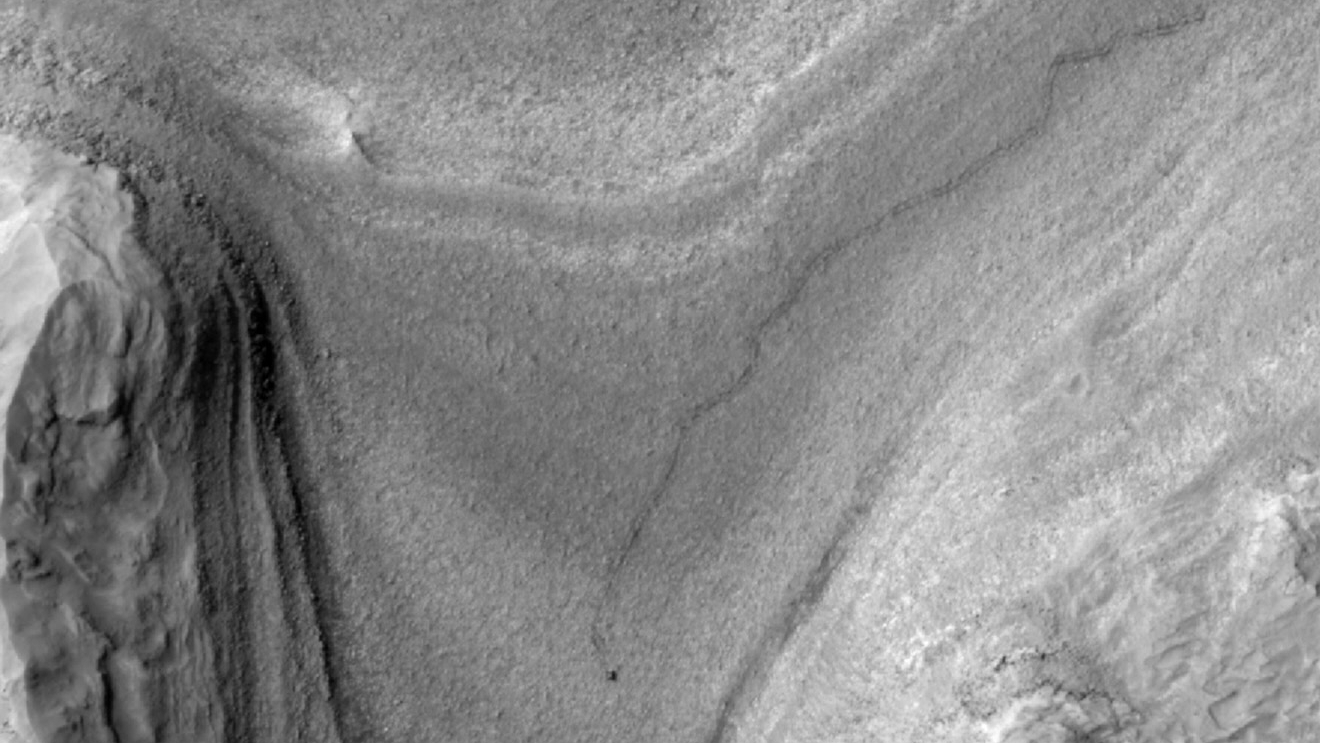
NASA's Mars Reconnaissance Orbiter (MRO) just snapped an off-Earth action shot the likes of which we've never seen before.
On Feb. 28, MRO's HiRISE (High-Resolution Imaging Science Experiment) camera captured NASA's Curiosity rover making tracks across Mars' huge Gale Crater.
MRO has spotted Curiosity before, but the car-sized rover had always been stationary in those cases. The newly released photo "is believed to be the first orbital image of the rover mid-drive across the Red Planet," NASA officials said in a statement today (April 24).
The rover tracks seen in the HiRISE image cover about 1,050 feet (320 meters) and will likely last for months before the Martian wind erases them, agency officials added.
"They represent roughly 11 drives starting on Feb. 2 as Curiosity trucked along at a top speed of 0.1 mph (0.16 kph) from Gediz Vallis channel on the journey to its next science stop: a region with potential boxwork formations, possibly made by groundwater billions of years ago," they wrote in the statement.
Related: Curiosity rover: The ultimate guide
Curiosity landed on the floor of the 96-mile-wide (154 km) Gale Crater in August 2012, on a mission to assess the area's past potential to host life as we know it.
Get the Space.com Newsletter
Breaking space news, the latest updates on rocket launches, skywatching events and more!
The rover's work has been extremely intriguing to astrobiologists, showing that Gale was indeed a habitable environment long ago: The area hosted a long-lived lake-and-stream system that had the ingredients for life, as well as a possible chemical energy source that could support microbial metabolism.
MRO has been operating at the Red Planet even longer than Curiosity, reaching Mars orbit in March 2006. As the new photo shows, MRO is still going strong, hunting for signs of past water activity on the Red Planet, serving as a communications relay for surface craft like Curiosity and its younger cousin, Perseverance — and keeping tabs on these robots' movements from time to time as well.
Join our Space Forums to keep talking space on the latest missions, night sky and more! And if you have a news tip, correction or comment, let us know at: community@space.com.

Michael Wall is a Senior Space Writer with Space.com and joined the team in 2010. He primarily covers exoplanets, spaceflight and military space, but has been known to dabble in the space art beat. His book about the search for alien life, "Out There," was published on Nov. 13, 2018. Before becoming a science writer, Michael worked as a herpetologist and wildlife biologist. He has a Ph.D. in evolutionary biology from the University of Sydney, Australia, a bachelor's degree from the University of Arizona, and a graduate certificate in science writing from the University of California, Santa Cruz. To find out what his latest project is, you can follow Michael on Twitter.
You must confirm your public display name before commenting
Please logout and then login again, you will then be prompted to enter your display name.
